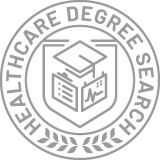Bachelor’s Degrees in Medical Illustration/Medical Illustrator
Featured schools near , edit
Education Levels of Medical Illustration/Medical Illustrator Majors
In 2020-2021, 41 earned their bachelor's degree in medical illustration/medical illustrator. This makes it the 89th most popular bachelor's degree program in the country.
The following table shows the number of diplomas awarded in medical illustration/medical illustrator at each degree level.
| Education Level | Number of Grads |
|---|---|
| Bachelor’s Degree | 41 |
| Master’s Degree | 37 |
| Graduate Certificate | 2 |
Earnings of Medical Illustration/Medical Illustrator Majors With Bachelor’s Degrees
At this time, we do not have the data to estimate the median earnings for this class of people.
Student Debt
We do not have the data to calculate the median and range of debt loads for medical illustration/medical illustrator students who are bachelor's degree holders.
Student Diversity
More women than men pursue their bachelor's degree in medical illustration/medical illustrator. About 70.7% of graduates with this degree are female.
| Gender | Number of Grads |
|---|---|
| Men | 12 |
| Women | 29 |

The racial-ethnic distribution of medical illustration/medical illustrator bachelor’s degree students is as follows:
| Race/Ethnicity | Number of Grads |
|---|---|
| Asian | 2 |
| Black or African American | 0 |
| Hispanic or Latino | 3 |
| White | 29 |
| International Students | 3 |
| Other Races/Ethnicities | 4 |

Most Popular Medical Illustration/Medical Illustrator Programs for Bachelor’s Degrees
There are 7 colleges that offer a bachelor’s degree in medical illustration/medical illustrator. Learn more about the most popular 7 below:
Rochester Institute of Technology tops the list of the most popular school in the U.S. for medical illustration/medical illustrator majors who are seeking their bachelor's degree. Roughly 16,100 attend the school each year. The average in-state tuition for full-time undergraduates is $50,225 per year, while in-state graduate students, on average, pay $52,092 per year. For the 2020-2021 academic year, 13 bachelor's degrees were handed out to medical illustration/medical illustrator majors at RIT. About 77% of this group were women, and 8% were students from an underrepresented racial-ethnic group.
Iowa State University is the 2nd most popular school in the nation for students seeking a bachelor's degree in medical illustration/medical illustrator. Each year, around 31,800 students seeking various degrees attend the university. The average in-state tuition for full-time undergraduates is $8,324 per year, while in-state graduate students, on average, pay $10,140 per year. During the 2020-2021 academic year, 8 people received their bachelor's degree in medical illustration/medical illustrator from Iowa State. Around 38% of these students were from an underrepresented racial-ethnic group, and 63% were women.
The 2nd most popular school in the country for medical illustration/medical illustrator majors who are seeking their bachelor's degree is Cleveland Institute of Art. Roughly 500 attend the school each year. For the 2020-2021 academic year, 8 bachelor's degrees were handed out to medical illustration/medical illustrator majors at CIA. Around 13% of these students were from an underrepresented racial-ethnic group, and 75% were women.
The 4th most popular school in the country for medical illustration/medical illustrator majors who are seeking their bachelor's degree is Rowan University. Roughly 19,600 attend the school each year. The average in-state tuition for full-time undergraduates is $10,302 per year, while in-state graduate students, on average, pay $13,169 per year. For the 2020-2021 academic year, 7 bachelor's degrees were handed out to medical illustration/medical illustrator majors at Rowan. Around 43% of these students were from an underrepresented racial-ethnic group, and 86% were women.
Arcadia University comes in at #5 on our list of the most popular colleges offering bachelor's degrees in medical illustration/medical illustrator. Roughly 3,300 attend the school each year. The average in-state tuition for full-time undergraduates is $45,520 per year, while in-state graduate students, on average, pay $27,311 per year. For the 2020-2021 academic year, 4 bachelor's degrees were handed out to medical illustration/medical illustrator majors at Arcadia. Of these students, 25% were women and 25% were members of underrepresented racial-ethnic groups.
Olivet College is the 6th most popular school in the nation for students seeking a bachelor's degree in medical illustration/medical illustrator. The medical illustration/medical illustrator program at Olivet College awarded 1 bachelor's degrees during the 2020-2021 school year.
Explore Major by State
Alabama
Arkansas
Connecticut
Florida
Idaho
Iowa
Louisiana
Massachusetts
Mississippi
Nebraska
New Jersey
North Carolina
Oklahoma
Rhode Island
Tennessee
Vermont
West Virginia
Related Majors
Below are some popular majors that are similar to medical illustration/medical illustrator that offer bachelor’s degrees.
| Major | Annual Degrees Awarded |
|---|---|
| Medical Informatics | 170 |
References
*The racial-ethnic minority student count is calculated by taking the total number of students and subtracting white students, international students, and students whose race/ethnicity was unknown. This number is then divided by the total number of students at the school to obtain the percentage of racial-ethnic minorities.
More about our data sources and methodologies.
Featured Schools
 Request Info
Request Info
|
Southern New Hampshire University You have goals. Southern New Hampshire University can help you get there. Whether you need a bachelor's degree to get into a career or want a master's degree to move up in your current career, SNHU has an online program for you. Find your degree from over 200 online programs. Learn More > |






